Transition 2021: Ministerial Handout for Incoming Minister: Book 1
Table of Contents
- Introduction
- Mandate
- Departmental Structure
- Indigenous Landscape
- What we do
- Crown–Indigenous Relations Policy and Programs
- International and Intergovernmental Relations and Obligations
- Inuit and Métis Housing and Infrastructure
- Negotiation of Comprehensive Land Claims, Specific Claims and Self-Government Agreements
- Management and Implementation of Existing Agreements and Treaties
- Resolution of Childhood Claims
- Indigenous Institutions and Governance Modernization
- Northern Governance
- Northern Policy and Programs
- Northern Science and Technology
- Northern Land, Resources and Environmental Management
- Issues Currently in the Public Eye
- Indigenous Partners
- Assembly of First Nations
- Métis National Council
- Inuit Tapiriit Kanatami
- Congress of Aboriginal Peoples
- Native Women’s Association of Canada
- Pauktuutit Inuit Women of Canada
- Les Femmes Michif Otipemisiwak
- First Nations Tax Commission
- First Nations Financial Management Board
- First Nations Finance Authority
- Provincial and Territorial Ministers
- ANNEX A: Acts and Legislation
1. Introduction
The role and contributions of Indigenous Peoples in Canada–First Nations, Inuit and Métis–are significant, rich and far-reaching throughout Canadian society, despite a complex and troubled historical relationship with the Government of Canada that negatively impacted communities and ways of life. Crown–Indigenous Relations and Northern Affairs Canada’s primary responsibility is to guide and coordinate the federal government’s relationship with Indigenous Peoples, finding a constructive path forward in addressing Indigenous Peoples’ claims and interests alongside those of government. The Department focuses its efforts on supporting Indigenous communities so that they may be better positioned to govern their own affairs, as well as promote the self-reliance, prosperity, and well-being of the residents and communities of the North.
This work is always conducted in balance with the broader national interest, and in partnership with other government departments to achieve a coherent federal approach to the Crown–Indigenous relationship. The Department works with Indigenous partners, other federal departments, provinces, territories, industry and other Canadians to shape the Government agenda in a manner that balances approaches while bringing the broader public interest into conversations that best support the needs and expectations of First Nations, Inuit and Métis Peoples in Canada. In parallel, Indigenous Services Canada’s primary responsibilities are the delivery of services and programs for and with First Nation and Inuit communities, such as health care, education, social programs and economic development. The emphasis is on closing the socioeconomic gap between Indigenous and non-Indigenous people and building up the capacity of Indigenous communities to accelerate self-determination. While having two separate mandates, Crown–Indigenous Relations and Northern Affairs Canada and Indigenous Services Canada are closely connected due to their complementary objectives, as well as through the sharing of some internal services.
This briefing book is intended to introduce you to the mandate and structure of Crown–Indigenous Relations and Northern Affairs Canada and provide you with an outline of some of the issues that are shaping how the Department moves forward. There are other matters beyond this overview on which you may wish to receive a briefing at a later time. Departmental officials and I will be pleased to brief you and your office in detail on the content presented in this briefing book and I look forward to engaging with you on the wide range of issues that occupy Crown–Indigenous Relations and Northern Affairs Canada.
Daniel Quan-Watson
Deputy Minister
Paula Isaak
Associate Deputy Minister
2. Mandate
A) Crown-Indigenous Relations
In 2017, the Department of Indian Affairs and Northern Development was dissolved and the departments of Crown–Indigenous Relations and Northern Affairs Canada (CIRNAC) and Indigenous Services Canada (ISC) were established so as to separate the process of designing and rebuilding new relationships with Indigenous Peoples from the administration of the Indian Act. The Department was established to carry out activities that support the Government of Canada’s commitment to advancing reconciliation with First Nations, Inuit and the Métis, by leading whole-of-government approaches relating to overall Crown–Indigenous relationships. Its primary focus is to renew nation-to-nation, Inuit–Crown, and government-to-government relationships based on affirmation and implementation of rights, respect, cooperation, and partnership. CIRNAC also works to promote respect for the rights of Indigenous Peoples as recognized and affirmed by section 35 of the Constitution Act, 1982, and implementation of the United Nations Declaration on the Rights of Indigenous Peoples. Key activities include: facilitating collaboration and cooperation with Indigenous Peoples and with the provinces and territories in relation to entering into and implementing agreements; the recognition and implementation of treaties concluded between the Crown and Indigenous Peoples; promoting self-determination, prosperity and well-being for the residents and communities of the Canadian North, taking into account their respective needs and challenges; recognizing and encouraging Indigenous ways of knowing, being and doing; addressing historical wrongs; and promoting public awareness and understanding of the importance of working toward and contributing to reconciliation with Indigenous Peoples.
The Department coordinates the Government’s relationship with national Indigenous organizations; namely the Assembly of First Nations, the Métis National Council, Inuit Tapiriit Kanatami, the Congress of Aboriginal Peoples, and the Native Women’s Association of Canada, as well as with other more local/regional Indigenous organizations and rights holders.
The Department supports Indigenous self-determination through the negotiation and implementation of self-government and comprehensive land claims agreements, the recognition and implementation of Indigenous and treaty rights, as well as through the settlement of claims relating to lands and historical grievances. It also consults and works with Indigenous Peoples, provinces and territories, and other stakeholders on policies, initiatives and legislation that could affect Indigenous communities.
To achieve a coherent whole of government federal approach to Crown–Indigenous relationships, the work of CIRNAC is always conducted in partnership with other government departments, such as Fisheries and Oceans Canada and Employment and Social Development Canada. Of all federal departments, the effective delivery of CIRNAC’s work is highly dependent upon the close cooperation and collaboration with ISC. CIRNAC and ISC are mandated to work together on a wide range of activities, such as capacity building to bring control of and jurisdiction for service delivery back to Indigenous communities. Where CIRNAC is responsible for continuing to modernize institutional structures and governance so that Indigenous Peoples can build capacity that supports the implementation of their vision of self-determination, ISC’s primary responsibilities are focused on capacity building to improve access to high-quality services, and to support Indigenous Peoples in assuming control of the delivery of services at the pace and in the ways they choose.
The Department guides the Government of Canada’s work to create a new relationship with First Nations, Inuit, and Métis, using different approaches to respect the unique situations of each of these three groups. The Department, with the support of the Justice Canada, plays a leadership role in ensuring that the Government of Canada is respecting its obligations as set out in agreements and the application of section 35 of the Constitution Act, 1982, which provides constitutional recognition and affirmation of the Indigenous and treaty rights of Indigenous Peoples in Canada.
Statutory Authorities of the Minister of Crown–Indigenous Relations
The Minister of Crown–Indigenous Relations has authority, in full or in part, over laws covering a wide range of subjects and responsibilities. The majority of these laws are related to the implementation of comprehensive land claims (e.g. Nisga'a Final Agreement Act Nunavut Act) and self-government agreements, where Indigenous groups have assumed authority for governance, land and resource management (e.g. Westbank First Nation Self-Government Act, Sioux Valley Dakota Nation Governance Act). The Minister also has authority over laws that bring First Nations out from under specific provisions of the Indian Act, such as for land management, fiscal management and local taxation powers (e.g. First Nations Land Management Act, First Nations Fiscal Management Act). The Minister continues to retain full accountability to Parliament for all of the statutes for which he or she is responsible. A complete list of statutes can be found in Annex A.
B) Northern Affairs
For the first time since 1966, a separate Minister responsible for Northern Affairs was appointed in 2018, and again in 2019, under the CIRANC portfolio. The Department is also responsible for leading the Government of Canada’s work in the North through the development, implementation and coordination of federal policy across departments in the North. It also leads the negotiation and implementation of the transfer of federal responsibilities to territorial governments (referred to as "devolution"), manages a number of federal regulatory and other functions not devolved through the Territorial Acts, supports the negotiation and implementation of Indigenous land claims and self-government agreements, and delivers federal programs and initiatives in the region.
The Crown–Indigenous Relations and Northern Affairs Act outlines the Department’s responsibilities over the administration of lands in Yukon, the Northwest Territories and Nunavut. As well, it outlines the work to complete the devolution of authorities to territorial governments. The resource management regimes in the North are implemented in large part by boards made up of representatives from Indigenous governments and organizations, the territorial governments, and the Government of Canada, as defined by land claims agreements. The Department maintains provincial-like responsibility for management of lands and water in Nunavut, which includes the approval of most water licenses and land use permits issued in the territory. The Department is also responsible for the legislation governing environmental assessments and holds some decision making powers involving environmental assessments and land use planning, as well as retaining responsibility for the management of offshore resources including oil and gas in all three territories.
Statutory Authorities of the Minister responsible for Northern Affairs
The Minister of Northern Affairs has authority specifically defined by sections 11 to 18 of the Department of Crown–Indigenous Relations and Northern Affairs Act, as well as over, in full or in part, statutes relating to Canada’s territories (e.g. Nunavut Act, Yukon Act), management of Northern land, resources and environment (e.g. Territorial Lands Act, Mackenzie Valley Resource Management Act), the management of northern regulatory regimes (e.g. Northwest Territories Waters Act); and northern and polar science (e.g. Canadian High Arctic Research Station Act). A complete list of statutes relating to Northern Affairs can be found in Annex A.
Quick overview of responsibilities of Crown-Indigenous Relations and Northern Affairs Canada and Indigenous Services Canada
| Crown-Indigenous Relations and Northern Affairs Canada | Indigenous Services Canada |
|---|---|
Crown-Indigenous Relations
Northern Affairs
|
|
3. Departmental Structure
Deputy Minister of Crown-Indigenous Relations and Northern Affairs: Daniel Quan-Watson

Daniel Quan-Watson is a proud public servant who is passionate about the role that public institutions play in shaping Canada and the lives of Canadians. His appointment at Crown–Indigenous Relations and Northern Affairs Canada is his fifth appointment as a Deputy Minister, having been Deputy Minister (and previously Associate Deputy Minister) of Western Economic Diversification, Chief Human Resources Officer for the Government of Canada and Chief Executive Officer, Parks Canada.
Much of his career has focused on work with Indigenous Peoples and issues, having been the Senior Assistant Deputy Minister for Policy and Strategic Direction at the former Indian and Northern Affairs Canada, Director General of the Aboriginal Justice Directorate at the Justice Canada, and Director of Aboriginal and Territorial Relations at Indian and Northern Affairs Canada’s Northwest Territories Regional Office. With the Government of British Columbia, he was Director of Treaty Implementation and Settlement Legislation, where he led the development of the Nisga'a Final Agreement Act (British Columbia), among other major initiatives. With the Government of Saskatchewan, he was responsible for first negotiations between the provincial Department of Education and what was then the Federation of Saskatchewan Indian Nations.
In the context of these positions, he played key roles in the negotiation of modern treaties, specific claims and many other agreements and processes. He was also the lead for several key legislative initiatives, litigation files and alternative justice programs. He has worked with Inuit, Métis and First Nation governments, communities and entities in every jurisdiction across Canada, and has lived in British Columbia, Alberta, the Northwest Territories, Saskatchewan, Ontario and Quebec.
Beyond this experience, Daniel has significant background in economic development and innovation issues, federal-provincial-territorial relations, labour relations and human resources issues, and cultural and ecological heritage matters. He has represented Canada on numerous issues at forums around the world and has represented the federal government in several federal-provincial-territorial forums.
Daniel is a pilot, sang for a time with the Regina Philharmonic Choir, has taught firearms safety and hunting courses, and has represented Canada in French, English and Spanish. His record for riding a Harley-Davidson from Ottawa to Edmonton is 46 hours and 10 minutes, one he intends never to repeat or beat.
Associate Deputy Minister of Crown–Indigenous Relations and Northern Affairs Canada: Paula Isaak

Paula Isaak joined CIRNAC as Associate Deputy Minister on March 3, 2021. In addition to (and separately from) her role as Associate Deputy Minister of CIRNAC, Paula serves as President of Canadian Northern Economic Development Agency, a position she has held since October 2018.
Throughout her 30 year public service career, Paula has worked on northern and Indigenous issues. She began her career in Ottawa but soon developed a strong interest in "on-the-ground" regional issues that took her to postings in a variety of places from coast to coast to coast.
Paula developed a number of areas of expertise, including: negotiations on Indigenous land claims in Yukon and the Northwest Territories; policy and program development for economic development; intergovernmental affairs; natural resources; environmental management; and education and social issues. She led teams at all levels on complex, high-profile issues from negotiating legislation with Indigenous organizations to designing the Missing and Murdered Indigenous Women and Girls Inquiry. She has lived and worked in the North for decades.
Prior to being appointed as President of the Canadian Northern Economic Development Agency, she was the Assistant Deputy Minister of Education and Social Development Programs and Partnerships at Indigenous Services Canada.
Paula has an undergraduate degree in Political Science from the University of Manitoba and a Master's degree in Public Administration from Carleton University.
Senior Management

Policy and Strategic Direction
Mary-Luisa Kapelus,
Senior Assistant Deputy Minister

Treaties and Aboriginal Government
Joe Wild,
Senior Assistant Deputy Minister

Resolution and Partnerships
Martin Reiher,
Assistant Deputy Minister

Implementation
Heather McLean
Acting Assistant Deputy Minister
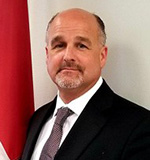
Northern Affairs Organization
Serge Beaudoin,
Assistant Deputy Minister

Chief Finances, Results and Delivery Officer
Darlene Bess,
Chief Finances, Results and Delivery Officer

Corporate Secretariat
Kate Ledgerwood,
Corporate Secretary

Diversity, Inclusion and Anti-Racism Secretariat
Marc-André Millaire,
Senior Director
Common services between Crown–Indigenous Relations and Northern Affairs Canada and Indigenous Services Canada

Human Resources and Workplace Services
Maryse Lavigne,
Director General

Communications
Aruna Sadana,
Director General

Audit and Evaluation
Stephanie Barozzi,
Chief Executive

Legal Services
Marie Bourry,
Senior General Counsel and Head of Legal Services
Financial Overview
CIRNAC’s 2021–2022 main estimates total $4.7 billion, of which approximately 99 percent come from appropriated funds voted by Parliament and one percent from statutory authorities.
CIRNAC’s 2021–2022 main estimates are comprised of:
- approximately $1.7 billion (or 35 percent) in operating expenditures;
- approximately $3.0 billion (or 64 percent) in transfer payments;
- approximately $300,000 in capital expenditures; and
- $25.9 million in loan funding for claimants involved in negotiations.
Operating Expenditures
Operating expenditures include funding of $1.2 billion for the Federal Indian Day school settlement and $163.9 million for the Northern Abandoned Mine Reclamation Program. Through operating funding, the Department also carries out activities related to the assessment, management and remediation of federal contaminated sites, and continues to meet obligations pursuant to the Indian Residential Schools Settlement Agreement.
Transfer Payments
Through transfer payments, the Department settles and implements comprehensive land claims and self-government agreements, resolves specific and special claims fairly and expeditiously address legal rights, supports the negotiation process and the implementation process, and advances work in the North.
Some of CIRNAC’s major transfer payments are:
- $1.2 billion in grants to First Nations to settle specific claims negotiated by Canada and/or awarded by the Specific Claims Tribunal, and to Indigenous groups to settle Special Claims;
- $770.6 million in grants to implement comprehensive land claims and self-government agreements and other agreements to address section 35 rights;
- $471.2 million in contributions to support the negotiation and implementation of Treaties, Claims, and self-government agreements or initiatives;
- $126.5 million in contributions for promoting the safe use, development, conservation and protection of the North’s natural resources, and promoting scientific development for Indigenous Peoples and the North;
- $108.1 million in contributions to support access to healthy foods in isolated northern communities;
- $98.2 million in grants to reimburse treaty negotiation loans to Indigenous groups who have settled a comprehensive land claim; and
- $60 million in grants to the Governments of the Northwest Territories and Nunavut for health care of First Nations and Inuit.
Human Resources Overview
CIRNAC has its main base of operations in the National Capital Region. It also has a presence across the country in regional offices. There are a total of 2,126 employees in the Department, of which 1,491 work in the National Capital Region. The remaining 635 employees are based in regions. There are 166 employees in the Vancouver office who support the negotiation and implementation of comprehensive land claims and self-government agreements, while another 180 employees work out of the various ISC regional offices, often as part of an internal shared services model.
The Northern Regional Landscape
CIRNAC’s northern regional offices in Whitehorse, Yellowknife and Iqaluit support northern Canadians in their efforts to improve social and economic well-being, to develop healthier, more sustainable communities and to participate more fully in Canada's political, social and economic development. The regional office in Whitehorse, Yukon has 92 employees, while the Northwest Territories office in Yellowknife has 101 employees and the Nunavut office in Iqaluit has 96 employees.
Shared Service Model between CIRNAC and ISC
Subsequent to the announcement of the dissolution of Indigenous and Northern Affairs Canada and the establishment of CIRNAC and ISC, units supporting the specific mandates of the new departments were transferred between them. As part of the establishment of both departments, a shared service model was established where some corporate level activities are shared between them, including human resources, information technology, accommodations, security, and communications functions. These shared services have reduced the overall amount of internal services available for the departments.
4. Indigenous Landscape
Indigenous Peoples in Canada consist of three main groups: First Nations (also referred to as Indians in laws such as the Indian Act), Inuit, and Métis. There are many cultural and legal differences between and within each of these three groups.
First Nations
First Nations are not a single group but several different groups speaking different languages and having a wide range of traditions and cultural practices. Despite this diversity, First Nations share similar experiences as a result of their interactions with the Government of Canada, life on reserves and the impact of specific laws, such as the Indian Act. This act, which is a piece of federal legislation, legally defines which individuals are entitled to be registered as "Indians" based on their ancestry. These individuals are typically referred to as "status" or "registered" Indians. Section 6 of the act provides the basis for how status is or can be passed down from parents to children. Status and place of residence are key in determining an individual’s eligibility for federal programs and services.
Within First Nation communities, there is also a difference between Status Indians who are recognized as members of a First Nation community (also known as a "band") versus non-band members. Through provisions of the Indian Act, some individual communities determine how band membership is established. Band membership may confer a variety of benefits, including acceptance as a member of the community and its culture and access to band-administered programs and services.
Another distinction lies between Treaty Indians–individuals who are members of First Nations having signed an agreement relating to historic land surrender (prior to 1975) or use with the Crown–and non-treaty Indians. Specific rights and benefits, such as treaty rights to hunt and fish or annual treaty annuity payments under the terms of the treaties, are available to Treaty Indians whether or not they live on reserve.
The Assembly of First Nations is a national advocacy organization that generally represents the interests of over 634 First Nation communities across the country.
Inuit
Inuit are the Indigenous Peoples originating in northern Canada. Most Inuit reside in Nunavut, the Mackenzie Delta area of the Northwest Territories (Inuvialuit), as well as northern parts of Quebec (Nunavik) and Labrador (Nunatsiavut). Since the conclusion of land claims agreements with Inuit have been settled, they are most readily identified as beneficiaries of one of four land claim agreements:
- the Inuvialuit Final Agreement (1984);
- the Nunavut Land Claims Agreement (1993);
- the Labrador Inuit Agreement (2005); and
- the Nunavik Inuit Land Claims Agreement (2006)/the Inuit-specific part of the Northern Quebec James Bay Agreement (1975)
Inuit Tapiriit Kanatami is the national voice of approximately 55,000 Inuit, living primarily in 53 communities in four Inuit land claim regions: Inuvialuit Settlement Region–Northwest Territories, Nunavut, Nunavik–Northern Quebec, and Nunatsiavut–Northern Labrador.
Métis
While there is no single or definitive legal definition of Métis, it is generally accepted that Métis are the descendants of First Nation women and European men who formed their own unique culture, traditions, language and way of life in distinct communities separate from other Indigenous and European communities.
Several court decisions have helped define Métis rights, such as the 2003 Powley decision where the Supreme Court of Canada held that for the purpose of establishing Indigenous rights, the term "Métis" in section 35 of the Constitution Act refers to distinctive peoples who, in addition to their mixed ancestry, developed their own customs, way of life, and recognizable group identity separate from their Indian and European forebears. In the 2013 Manitoba Métis Federation case, the courts signaled that the federal Crown needs to engage with the descendants of the Métis people of the Red River Valley in a meaningful way.
Beyond those with defined Métis rights, a broader community of Métis of mixed Indigenous–European ancestry is located throughout Canada, including outside the Métis homeland east of Ontario and in the North. Some members of this community are represented by the Congress of Aboriginal Peoples.
The Métis National Council represents four governing members: the Métis Nation of Ontario, the Métis Nation–Saskatchewan, the Métis Nation of Alberta, and the Métis Nation British Colombia.
Non-Status Indians
Non-Status Indians are persons who identify themselves as First Nation but who are not eligible to be registered under the Indian Act, as they do not meet the criteria established in section 6 of the act, or choose not to register, and are thus not eligible for federal benefits flowing from registration. In 2016, the Supreme Court of Canada ruled in Daniels v. Canada that Non-Status Indians are "Indians" for the purposes of section 91(24) of the Constitution Act, 1867. Canada continues to work toward a response to the Daniels v. Canada decision that will address the unique circumstances of Non-Status First Nations and Métis.
The Congress of Aboriginal Peoples is a national advocacy organization (since 1971) that represents Non-Status First Nations (as well as the interests of off-reserve Status First Nations, Métis outside the Métis Nation, and Southern Inuit of Labrador). Work is underway to better define the scope of the organization’s membership.
This population resides across Canada, where the vast majority live in urban areas and many are represented by the Congress of Aboriginal Peoples.
Demographics
The Indigenous population is younger than the overall Canadian population and is growing more rapidly than any other segment of the Canadian population.
In the 2016 National Household Survey, 1.67 million people in Canada identified themselves as Indigenous, representing four percent of the Canadian population.
| Registered Indian | 49 percent (820,120) |
| Métis | 32.1 percent (537,855) |
| Non-Status Indian | 13.9 percent (232,380) |
| Inuit | 3.8 percent (64,325) |
| Other Indigenous* | 1.1 percent (19,100) |
| Total | 100.0 percent (1,673,780) |
*Other Indigenous refers to respondents who reported more than one identity group and those who reported being a band member with no Indigenous identity and no registered Indian status.
In 2016, 40 percent of the Registered Indian population lived on reserve. Among the other groups, the majority of Non-Status Indians and Métis (75 percent and 71 percent, respectively) lived in urban areas, while Inuit lived predominantly in northern and rural areas.
Historical Context of the Crown–Indigenous Relationship
Indigenous Peoples’ relationships with the Government of Canada have evolved over time, and continue to do so. Early interactions between European explorers and "Indians" (First Nations), Inuit, and later Métis, were based on mutually beneficial objectives and strategic alliances through treaties that largely focused on trade and protection, and eventually on land purchases. After the issuance of the Royal Proclamation of 1763 which established British authority in New France and addressed some First Nations’ interests, the nature of the Crown–Indigenous relationship changed from one built on concepts of nation-to-nation relations to one where the Crown exercised growing power and authority over Indigenous Peoples.
By the 19th century, new ideas and approaches towards this relationship began to take hold. Starting in the 1820s, different initiatives were undertaken to assimilate First Nations into British settler society. After 1867, Canada assumed responsibility for the management of "Indians and Indian lands" and adopted the Indian Act of 1876. This act gave greater authority to the Department of Indian Affairs by permitting it to intervene in the lives of First Nations and oversee local governance of communities. Amendments to the Indian Act led to increased restrictions and even greater controls upon the lives of First Nations. The Department of Indian Affairs was mandated to manage reserve lands and to push policies and programs aimed at bringing about the cultural and social change of Indigenous Peoples. Of specific note, the Department of Indian Affairs used the Indian Act and other policies relating to educational programs to force a transformation of Indigenous societies. Residential schools were established in the 1880s to educate Indigenous children in a religious environment. These schools saw the removal of 150,000 Indigenous children, often forcibly, from their families and communities to attend faraway schools.
Since Confederation in 1867, Inuit were outside the responsibility of the Department of Indian Affairs, as it was argued that the wording of the British North America Act only included "Indians" as a federal responsibility and not Inuit. After a Supreme Court of Canada ruling in 1939, indicating that Inuit should be considered as "Indians" and be the responsibility of the federal government, programs and services were slowly developed for Inuit and other northern Indigenous Peoples. Although managed separately from the Department of Indian Affairs until 1966, programs and policies were largely ineffective and often inappropriate for northern regions. Since the 1970s, Inuit communities have negotiated land claims and governance agreements over their traditional lands which culminated in the creation of the territory of Nunavut as a public government.
By the mid-1940s, it was apparent that the policies to assimilate First Nations needed to be abandoned as First Nations communities rejected cultural assimilation into non-Indigenous society. This started a slow process of amendments to the Indian Act and other policies to gradually limit some of the authority of the federal government over First Nation communities. During the last half century, local control has been transferred through various programs, as well as through agreements on self-government, as a response to increasing calls to greater First Nation autonomy and a growing recognition of an Indigenous right to self-government and self-determination.
While treaties to determine Indigenous land rights were in place up to the early 20th century, later policies ended the practice of treaty making and rejected Indigenous rights. By the 1970s, new policies, such as the Comprehensive Land Claims Policy and the Specific Claims Policy, were developed to address outstanding Indigenous claims and rights. After a series of landmark court decisions brought about an important shift in the recognition of Indigenous rights in Canada, a new policy was announced to settle Indigenous claims to lands and resources through a negotiated process. Since 1975, there have been 25 such agreements, commonly known as "modern treaties," signed with Indigenous Peoples across northern Québec, the Northwest Territories, Yukon, and British Columbia. In conjunction, a companion policy was created in 1973 to address claims of a more specific nature relating to historic grievances, such as for unfulfilled treaty obligations or improper land management, known as Specific Claims. Since 2008, this process is supplemented by the Specific Claims Tribunal Act that creates an independent body known as the Specific Claims Tribunal with the authority to make binding decisions in respect to the validity of claims and compensation.
When the Canadian constitution was repatriated in 1982, First Nations, Inuit, and Métis political organizations pushed and succeeded in securing their places at the discussion table. These discussions culminated in the inclusion of section 35 to the Constitution Act, 1982, which recognised "existing Aboriginal and treaty rights" as well as a definition of Indigenous Peoples which included all three groups. Section 35 has become an important mechanism for Indigenous Peoples to define and clarify the extent of Indigenous and treaty rights.
Much like Inuit in Canada’s North, Métis were long ignored by the federal government. Not recognised as an Indigenous group until 1982, Métis struggled to gain recognition of their rights or any federal responsibilities towards them. Since their recognition in section 35, provincial Métis organizations as well as the Métis National Council have used the courts to advocate for their place in Canada.
After nearly a decade of discussions and negotiations, a settlement was announced in 2007 to compensate residential school survivors. As part of this settlement, the Truth and Reconciliation Commission was established to act as an independent body to provide a safe and culturally appropriate place for former students and others affected by the residential school system to share their experiences. On June 11, 2008, Prime Minister Stephen Harper offered a formal apology to former students of residential schools and sought forgiveness for the students’ suffering as well as for the impact of the schools on Indigenous culture, heritage and languages. In 2015, the Truth and Reconciliation Commission issued its final report and Calls to Action calling for a sweeping overhaul of the relationship between Indigenous Peoples and Canadians. As Government of Canada and Indigenous partners continue to implement the Calls to Actions, the announcement of unknown remains of children at the sites of residential schools continues to cause Canadians to confront the racist and discriminatory history of Canada’s treatment of Indigenous Peoples.
Since the shift away from the policies of assimilation in the 1970s and the introduction of policies aiming to resolve outstanding claims and grievances, new processes have allowed for improvements to a difficult relationship. Over the course of 40 years, 25 modern treaties have been signed with over a hundred Indigenous communities, while over 500 Specific Claims have been settled, bringing over $6 billion in compensation into First Nations communities. To date, 20 self-government agreements have allowed Indigenous communities to take back control of their own affairs, creating new opportunities for growth and change. Building on the recognition of Aboriginal and treaty rights in the Constitution Act, 1982, new ways of discussing how to better recognize and implement those rights have been established, that will help to restore the Crown–Indigenous relationship and finding constructive paths to advance Indigenous economic and social participation and self-determination.
5. What we do
The core purposes of the Department are to support Canada’s efforts for Reconciliation by addressing historic wrongs, to ensure the fulfillment of its obligations towards Indigenous Peoples, to shape the nature of the Crown–Indigenous relationship, as well as to support and promote the self-reliance, prosperity and well-being of residents and communities of the North. There has been increased emphasis on (and heightened expectations related to) key areas that underscore the Crown–Indigenous relationship, including: co-development of legislative and policy proposals; support for the implementation of the United Nations Declaration on the Rights of Indigenous Peoples; and the advancement of Reconciliation as an overarching goal. The topics discussed in this section present an overview of the current business lines of the Department supporting these purposes, the work to date on leading files and the degree of advancement in the development of new policies.
Crown–Indigenous Relations Policy and Programs
The historic relationship between the Government of Canada and Indigenous Peoples has been challenging and complex. The Department has sought to establish new approaches to restore this relationship and find a constructive path forward to advance Indigenous economic and social participation and self-determination. A key element of this approach has been to engage organizations representing First Nations, Inuit, Métis, and Indigenous women and Two Spirit and LGBTQQIA (2SLGBTQQIA) people, in high-level meetings to discuss priorities and interests to implement agreements and ensure voices of all Indigenous peoples are reflected and gaps are addressed. Recent commissions and inquiries, such as the National Inquiry into Missing and Murdered Indigenous Women and Girls and the Truth and Reconciliation Commission, have provided recommendations which directly affect the Crown–Indigenous relationship by setting out a way forward. Implementing the federal responses to these reports require a coordinated approach among federal departments and with a range of other players, including provincial and territorial governments. The Department plays a whole-of-government role in these coordinated approaches for the Government of Canada.
Supporting Missing and Murdered Indigenous Women, Girls, and 2SLGBTQQIA people
Ending the disproportionally high levels of violence that Indigenous women, girls, and 2SLGBTQQIA people experience continues to be a priority for Indigenous Peoples and the Government of Canada. The National Inquiry into Missing and Murdered Indigenous Women and Girls highlighted the underlying factors of this violence, and provided 231 Calls for Justice to address them, directed at all governments, industry, the media and all Canadians. This included the development and implementation of a National Action Plan.
The development and implementation of such a comprehensive, whole-of-government and whole-of Canada action plan, requires strong coordination and collaboration. The Department leads and coordinates the collaboration with families and survivors of Missing and Murdered Indigenous Women and Girls and 2SLGBTQQIA people, Indigenous (women’s and 2SLGBTQQIA) groups and organizations, other Government of Canada departments, provinces, and territories. The Department leads and coordinates the work on the Federal Pathway to Address Missing and Murdered Indigenous Women, Girls, and 2SLGBTQQIA people, which is the Government of Canada’s contribution to the National Action Plan and includes the work of over 20 departments and agencies.
The Department also supports Indigenous groups, families, and survivors to engage and participate in the National Action Plan’s development and implementation. It also implements programs including supports for projects that assist families and survivors in their healing journeys, for Indigenous groups to develop innovative approaches to data, for the revitalization of Indigenous cultural spaces, and enhanced supports for Indigenous women’s organizations.
International and Intergovernmental Relations and Obligations
The Government of Canada exercises leadership on engagement with Indigenous leaders on substantive federal-provincial-territorial issues, with a view to increasing the level of federal–provincial–territorial–Indigenous engagement over time, as well as internationally. The Department leads a whole-of-government framework for federal–provincial–territorial–Indigenous relations and provides the platform to engage in a number of major reconciliation initiatives including the implementation of the United Nations Declaration on the Rights of Indigenous Peoples, establishing a framework for the recognition of Indigenous rights, advancing the implementation of the recommendations of the Truth and Reconciliation Commission, and implementing the National Action Plan for Missing and Murdered Indigenous Women and Girls. On the international stage, CIRNAC has an active profile multilaterally, bilaterally, and in trade relations, collaborating with Indigenous and government partners to ensure that international work contributes to positive domestic outcomes for Indigenous Peoples. The Department works to articulate national interests and promote Indigenous participation in international forums, and plays an important role in delivering on Canada’s human rights obligations. The Department works closely with other federal departments, such as Global Affairs Canada, to ensure that Canada’s views are heard at international forums such as the United Nations, the Arctic Council, or the Organization of American States.
Inuit and Métis Housing and Infrastructure
CIRNAC designed its housing and infrastructure programming with a primary focus on self-determination, in recognition of its commitment to a government-to-government, Inuit–Crown relationship. Through this approach, the Department does not provide direct service delivery to Inuit and Métis individuals, but partners with and funds Inuit and Métis governments and organizations to deliver services to their respective members. CIRNAC is the federal lead for both the Inuit Nunangat and Métis housing strategies with the goal of addressing core housing needs for Inuit and Métis peoples and closing the gap with non-Indigenous Canadians by 2030. Housing funds are delivered, respectively, to support the Métis Nation Housing Strategy ($500 million over ten years from Budget 2018) and the Inuit Nunangat Housing Strategy ($800 million since 2016).
Infrastructure programming is Indigenous-led by design, with Métis and Inuit governments and organizations working in full partnership with CIRNAC in policy development, program implementation, and project prioritization. Budget 2021 provided the first direct federal investment in Inuit and Métis infrastructure through the Indigenous Community Infrastructure Fund ($240 million for Métis , and $518 million for Inuit, over four years).
Negotiation of Comprehensive Land Claims, Specific Claims and Self-Government Agreements
Many treaties were concluded between the Crown and Indigenous Peoples prior to Confederation to address Indigenous rights and interests, but there remains a significant number of communities with outstanding claims and interests to lands and resources. Some claims are addressed by comprehensive land claims agreements, often called "modern treaties," to resolve outstanding Indigenous interest to lands and resources, while other claims address grievances of improper administration of lands and assets or treaty obligations, which are addressed through the Specific Claims process. Self-government agreements, on the other hand, are to establish local governance by communities outside of the Indian Act. The Department is working to address these outstanding claims through improved collaboration between governments and Indigenous groups, based on mutual respect, trust, understanding, shared responsibilities, accountability, dialogue and negotiation concerning the rights and interests of Indigenous Peoples. The Department coordinates the federal government’s interests in these negotiations.
Management and Implementation of Existing Agreements and Treaties
Of the many modern treaty agreements that have been concluded since the 1970s, several have resulted in court rulings indicating failures in Canada’s implementation of modern and historic treaties. The Department provides oversight on the efficient implementation of settlement agreements and treaties, creating and maintaining ongoing partnerships to support this goal.
As a result of court rulings citing shortcomings relating to the infringement of Aboriginal and treaty rights, CIRNAC also supports federal departments and agencies to fulfill the Crown’s legal duty to consult Indigenous Peoples, whose asserted or established Aboriginal or treaty rights may be impacted by a federal activity. CIRNAC also coordinates the federal approach to the United Nations Declaration on the Rights of Indigenous Peoples.
Resolution of Childhood Claims
Historical programs and policies of assimilation, such as Indian Residential Schools, have had deep and long-lasting negative impacts on Indigenous Peoples and their communities. A number of processes have been established to address and compensate individuals affected by these policies, including assisting communities in identifying the graves of children at residential schools. These processes support a claimant-centered, non-adversarial, out-of-court process to resolve claims of sexual abuse and serious physical abuse. While the resolution of claims relating to residential schools is coming to an end, processes are in place to address the legacy of other wrongful acts, such as the "Sixties Scoop" and Indian Day Schools.
Indigenous Institutions and Governance Modernization
Economic self-sustainability is an important element of Indigenous self-determination. To support this goal, the Department has established programs and policies to bring greater economic flexibility to First Nations communities. Through the First Nations Fiscal Management Act and the fiscal institutions it creates, First Nations are able to opt out of specific provisions of the Indian Act allowing for greater fiscal management and taxation powers. These programs also include developing governance and institutional mechanisms, strengthening Indigenous financial management and treasury functions, and facilitating access to market capital.
Control and management of local lands and resources are another important element to advance self-determination. The First Nations Lands Management Act provides mechanisms for communities to gain greater control of their lands and resources by coming out from under the Indian Act. More than 150 First Nations now have control of their lands and negotiations with other communities are ongoing.
Additions to reserve (the addition of parcels of land to an existing reserve), is another area of CIRNAC’s work, in collaboration with ISC, which manages reserve lands under the Indian Act. An addition to reserve can serve many functions, including fulfilling a legal obligation, improving community access to land and resources, and increasing community and economic development for First Nations.
Northern Governance
A focus of the Department has been the improvement of governance structures and mechanisms in the Canadian North. A key activity in this area has been the transfer of federal responsibilities for lands and natural resources to territorial governments (called "devolution") to ensure greater local control, as well as to fostering effective relations with territorial and Inuit governments.
Northern Policy and Programs
CIRNAC also works with Indigenous organizations and other territorial partners to help meet the needs and interests of northerners in areas such as food security, post-secondary education, economic development, climate change (adaptation) and reduced reliance on diesel. Launched in 2019, the Arctic and Northern Policy Framework, co-developed by the federal government and territorial, provincial, and Indigenous partners, guides the Government of Canada’s priorities, activities and investments in the Arctic to 2030 and beyond and aligns Canada’s national and international policy objectives with the priorities of northerners. The Department also advances Canadian and northern interests through forums such as the International Arctic Council.
Northern Science and Technology
The Northern Affairs portfolio has long played a central role in supporting scientific research and technology in the North, through programs and infrastructure to ensure domestic and international policy on key northern issues is better informed by a scientific knowledge base. To do so, its focus is to: research and monitor contaminants and their impacts on the ecosystem and human health through the Northern Contaminants Program; assess, manage and communicate scientific data and results, and contribute expertise to help inform public policy-making and international controls on certain contaminants; and support the maintenance of the Canadian High Arctic Research Station.
Northern Contaminated Sites
Through the Northern Contaminated Sites Program, the Department manages a number of contaminated properties abandoned as a result of private sector mining and oil and gas activities and government military activity that occurred more than 50 years ago, when environmental impacts were not fully understood. The objective of the Northern Contaminated Sites Program is to manage contaminated sites in a cost-effective and consistent manner. The program aims to reduce or eliminate, where possible, risks to human and environmental health, and to decrease the federal environmental liability associated with contaminated sites in the North. Priority is given to those sites posing the highest risks.
Northern Land, Resources and Environmental Management
While striving to increase the transfer of federal responsibilities to territorial governments, the federal government, through the Department’s administration of Northern Affairs, retains responsibility over some lands and resources in the North. As a result, several programs and policies focus on the management, sustainable development and regulatory oversight of the land, water, natural resources, and environment of the North. Northern Affairs also manages the Department's role as the Government of Canada's natural resource manager in Nunavut and the northern offshore, and its post-devolution responsibilities in the Northwest Territories and Yukon. Of specific note, this involves: managing oil and gas resources development; supporting the sustainable management of active mineral exploration and development; supporting the sound management of contaminated sites and the few remaining CIRNAC-managed land and water areas in the North; and ensuring the completion of territorial land use planning, including zones for conservation, development and other uses.
6. Issues Currently in the Public Eye
The following issues may be raised by the public or partners in the early days of the mandate.
I will be pleased to brief you on these and other more forward-looking issues over the coming weeks.
Crown–Indigenous Relations
Addressing Missing and Murdered Indigenous Women, Girls, and 2SLGBTQQIA people
- In June 2019, the National Inquiry into Missing and Murdered Indigenous Women and Girls (National Inquiry) released its Final Report, which contains 231 Calls for Justice that are directed at federal, provincial, territorial, municipal and Indigenous governments, social service providers, industry, the media and all Canadians.
- The Government of Canada committed to developing and implementing a National Action Plan to address violence against Indigenous women, girls and 2SLGBTQQIA people, in collaboration with Indigenous partners and provinces and territories.
- An Indigenous-led structure with over 100 partners, families and survivors including Indigenous groups (Indigenous women and 2SLGBTQQIA organizations and groups, National Indigenous Organizations), families and survivors of Missing and Murdered Indigenous Women and Girls, provinces and territories, and other federal departments developed the 2021 National Action Plan: Ending Violence Against Indigenous Women, Girls, And 2SLGBTQQIA+ People (National Action Plan) and the Federal Pathway to Address Missing and Murdered Indigenous Women, Girls and 2SLGBTQQIA+ People, which is the federal contribution to the National Action Plan.
- The National Action Plan, the Federal Pathway and Partner Chapters (National Family and Survivors Circle, First Nations, Inuit, Métis, 2SLGBTQQIA, Urban, Congress of Aboriginal Peoples, a Joint Statement from the Provinces and Territories, and a Data Strategy) were released on June 3, 2021.
- CIRNAC continues to work with other federal departments, provincial and territorial governments and Indigenous partners, families, and survivors to move forward on implementation.
Truth and Reconciliation Commission Calls To Action
- In 2015, the Truth and Reconciliation Commission of Canada called on the Government of Canada, provincial and territorial governments, churches, corporations and schools to implement 94 Calls to Action. Out of the 94 Calls to Action, 44 are under the responsibility of the federal government alone, 32 are under joint responsibility between the federal government and other key parties, and 18 are under non-federal responsibility.
- To date, over 80 percent of the Calls to Action under the responsibility of the federal government alone or shared responsibility between the federal government, provincial and territorial governments and other key partners, are complete or underway.
Calls to Action 72 to 76: Missing Children and Burials
- The Truth and Reconciliation Commission of Canada reported that thousands of Indigenous children died while attending Indian Residential Schools. Children were often buried far from their home communities in unmarked or unregistered cemeteries near the schools.
- The deaths of children and the location of their final resting places were infrequently reported to families and they have not been afforded the right to bury these children in a culturally-appropriate and respectful manner. The actual number of individual burial or cemetery sites associated with residential schools is unknown.
- Budget 2019 allocated $33.8 million over three years for Canada to implement the Truth and Reconciliation Commission’s Calls to Action 72–76. Canada accessed $6.7 million of these funds in June 2020, to continue to develop and maintain the National Indian Residential School Student Death Register (Call to Action 72) in partnership with the National Centre for Truth and Reconciliation, to support the establishment of a National Cemeteries Register (Call to Action 73) and to engage with Indigenous partners on a comprehensive plan for the implementation of Calls to Action 74–76 regarding the locating and memorialization of those children who died while attending residential schools and their final resting places. In summer/fall 2020, the Department conducted 16 national, virtual engagements sessions which informed the policy approach moving forward.
- On June 1, 2021, the Government of Canada announced the remaining funding of $27.1 million over three years to support community-led, survivor-informed, and trauma-centred initiatives to support:
- a national strategy to guide the implementation of Calls to Action 74–76;
- partnerships with impacted communities, and collaboratively guide implementation;
- Indigenous partners and communities to develop community plans, conduct research and gather local knowledge;
- accessing professional archaeological investigation services to identify and delineate burial sites; and
- memorializing and commemorating burial places and returning their loved ones' remains home, when requested.
Indigenous Childhood Claims Litigation
- Indigenous Childhood Claims Litigation include class actions, individual and multi-plaintiffs litigation related to the Sixties Scoop, Indian Residential Schools Day Scholars, Indian Days Schools, Indian Hospitals, Indian Boarding homes, provincial residential schools, joint schools, and other historic education and care programming.
- The approach has been to resolve Childhood Claims outside of the courts, whenever possible. By negotiating resolution of Childhood Claims outside of the courts, settlements can balance individual compensation with forward-looking programming for healing, wellness, education, language, culture, and commemoration.
- Commitment to this approach has been demonstrated through:
- the Anderson (Newfoundland and Labrador Residential Schools) Settlement Agreement (2016);
- the formal apology to former students of the Newfoundland and Labrador Residential Schools (2017);
- the Sixties Scoop (Status Indian and Inuit) Settlement Agreement (2018);
- the McLean Federal Indian Day Schools Settlement Agreement (2019);
- the appointment of the permanent board of the Sixties Scoop Healing Foundation (2020);
- the proposed settlement of the partial settlement of Gottfriedson (Indian Residential Schools Day Scholars) (June 2021); and
- the official launch of the McLean Day Schools Settlement Corporation August 2021).
Indian Residential Schools Settlement Agreement Ongoing Litigation
- In order to ensure the efficient and expeditious administration of the Indian Residential Schools Settlement Agreement (the Settlement Agreement), the courts determined that a streamlined process for addressing all matters that required court orders, directions, or consideration during the course of the administration was desirable.
- Two Administrative Judges–one in the east and one in the west–were appointed to provide judicial guidance on the administration of the Settlement Agreement under the Court Administration Protocol.
- Over 100 Requests for Direction seeking guidance on various issues related to claims, additions to schools, privacy of claimant information, administrative costs, legal fees, misconduct, and other administrative issues have been addressed through this protocol.
United Nations Declaration on the Rights of Indigenous Peoples
- On June 21, 2021, the United Nations Declaration on the Rights of Indigenous Peoples Act (the Act) received Royal Assent and immediately came into force. The Act affirms the United Nations Declaration on the Rights of Indigenous Peoples (the Declaration) as a universal, international human rights instrument with application in Canadian law. It also creates a framework to advance the implementation of the Declaration at the federal level. Justice Canada has been designated to lead the implementation of each of the requirements under the Act, with the support of CIRNAC and Natural Resources Canada.
- The Act contains three key legal obligations on the Government of Canada that specifically address its implementation, in consultation and cooperation with Indigenous Peoples, through:
- the employment of "all measures necessary" to ensure consistency of federal laws with the Declaration;
- the development of an action plan within two years of Royal Assent to achieve the objectives of the Declaration, including:
- addressing injustices, combating prejudice and eliminating all forms of violence, racism and discrimination, including systemic racism and discrimination, against Indigenous Peoples and Indigenous elders, youth, children, women, men, persons with disabilities, gender-diverse persons and two-spirit persons;
- promoting mutual respect and understanding as well as good relations, including through human rights education;
- measures related to monitoring, oversight, recourse or remedy or other accountability measures with respect to the implementation of the Declaration;
- measures related to monitoring the implementation of the plan and reviewing and amending the plan; and
- an annual report to Parliament.
- Budget 2021 allocated $31.5 million over two years to support the co-development of an action plan with Indigenous partners. Funding for this initiative for Indigenous partners will flow through CIRNAC’s existing mechanisms.
Atlantic Fisheries and Moderate Livelihood
- In fall 2020, Atlantic Indigenous groups–notably in Nova Scotia–began unilaterally exercising their Supreme Court of Canada-affirmed treaty right to fish for a "moderate livelihood" based on the 1760–1761 Peace and Friendship Treaties. Because this commercial fishing activity is considered outside of federal legislation (i.e. is unauthorized and has often been conducted outside the regulated season), Fisheries and Oceans Canada seized gear and made a number of arrests. There were also incidences of violence and racism towards Indigenous fishers from non-Indigenous harvesters. Throughout 2020–2021, several communities have conducted unauthorized moderate livelihood fishing.
- Fisheries and Oceans Canada, supported by CIRNAC, has been in discussions with Indigenous groups on exercising their treaty right, including exploring longer-term reconciliation agreements and short-term moderate livelihood arrangements within the regulated commercial season. To date, four agreements with five communities have been signed.
- Fisheries and Oceans continues to monitor and enforce moderate livelihood fisheries under existing federal regulations. Many Indigenous communities, however, desire greater self-determination in exercising their treaty right and flexibility in Fisheries and Oceans’ legislation, including around seasons.
Six Nations of the Grand River–Claims and Caledonia Land Dispute
- In 1995, the Elected Chief and Council of Six Nations filed litigation against Canada and Ontario. The litigation alleges the Crown breached treaty obligations and/or fiduciary duties and is seeking equitable compensation or damages for the breaches. In the alternative, the claim seeks an accounting of all Six Nations’ assets from 1784 to the present.
- On July 19, 2020, a small group of Six Nations "land defenders" began occupying a planned residential development in Caledonia, Ontario on lands owned by Foxgate Developments Inc. The protesters claim the lands are rightfully Six Nations lands. Efforts to remove the protesters led to confrontations with police, as well as road and rail blockades.
- On August 19, 2020, the Minister of Crown–Indigenous Relations and the Minister of Indigenous Services Canada wrote to the Six Nations Elected Council and the Haudenosaunee Confederacy Chiefs Council (Six Nations’ traditional government, not recognized under the Indian Act), offering to meet in order to discuss Six Nations’ claims and priorities for self-determination.
Métis Negotiations
- Canada has been engaging in Recognition of Indigenous Rights and Self-Determination discussion tables with various Métis governing bodies to explore their interests.
- In April 2017, through the signing of the Canada–Métis Nation Accord, Canada established a forum for senior political leadership from Canada and the Métis Nation to identify joint priorities, co-develop policy, and monitor progress on initiatives.
- While some progress was made at this forum until 2018, there is a need to re-engineer this forum to reflect new political realities among the Métis.
- During this time, Recognition of Indigenous Rights and Self-Determination discussions led to Canada signing Framework Agreements to Advance Reconciliation between 2016 and 2018, with Métis governing bodies that included commitments to renew the government-to-government relationship between Canada and the Métis, and to pursue self-government as an immediate priority.
- Negotiations pursuant to the Framework Agreements with Métis Nation of Ontario, Métis Nation of Alberta, Métis Nation–Saskatchewan led to Canada signing separate Métis Government Recognition and Self-Government Agreements (Self-Government Agreements) with each of these bodies, collectively known as the Tri-council, on June 27, 2019. The Self-Government Agreements commit Canada to introducing legislation following their signing, which would one day give effect to the agreements and recognize them as Indigenous governments, pending the conclusion of certain requirements to operationalize the governments.
- Negotiations toward these requirements, which include a ratified constitution, a transition plan, and intergovernmental relations and fiscal financing agreements, are underway.
- The Manitoba Metis Federation elected to pursue its own path toward self-government with Canada through the negotiation of a treaty on core governance. On July 6, 2021, Canada and the Manitoba Metis Federation signed a Self-Government Recognition and Implementation Agreement (the Implementation Agreement) that recognizes the Manitoba Metis Federation as an Indigenous government with jurisdiction over citizenship, elections, and internal affairs. The Implementation Agreement is an incremental step on the path toward self-government, and commits Canada to continue work towards the treaty.
- The appropriate paths forward with the Métis Nation of British Columbia and the Métis Settlements General Council, who have also signed Framework Agreements for Advancing Reconciliation with Canada, are still being explored.
Desautel Court Decision Implications
- The Desautel case dealt with whether a member of an Indigenous collective located outside Canada can assert Aboriginal rights in Canada as "Aboriginal peoples of Canada" under section 35 of the Constitution Act, 1982.
- Mr. Richard Desautel, an American citizen and member of the Lakes Tribe in Washington State, killed an elk near Castlegar, British Columbia, and was charged under the provincial Wildlife Act.
- The British Columbia Provincial Court acquitted Mr. Desautel, finding that he has an Aboriginal right to hunt in the traditional territory of his Sinixt ancestors in British Columbia.
- The decision was upheld on appeal by the British Columbia Supreme Court and British Columbia Court of Appeal.
- Canada was not a party to this litigation, but intervened in the appeal at the Supreme Court of Canada level.
- The Supreme Court of Canada hearing took place on October 8, 2020.
- On April 23, 2021, the Supreme Court released its decision dismissing the Province of British Columbia’s appeal and upholding the acquittal of Mr. Desautel of charges under the British Columbia Wildlife Act.
- In the 7–2 decision, the Court affirmed that Indigenous individuals who are not citizens or residents of Canada may exercise section 35 Aboriginal rights in Canada.
- The Desautel decision has added a new element with respect to whom section 35(1) of the Constitution Act, 1982 applies. The Supreme Court of Canada found that Indigenous individuals who are not citizens or residents of Canada may meet the definition of "Aboriginal peoples of Canada" and may be able to exercise section 35 Aboriginal rights in Canada.
- The Court held that, once a group establishes that they are an Aboriginal people of Canada, the Van der Peet test/decision is the relevant test for establishing Aboriginal rights. The test is the same for groups outside Canada as for those within. New rights are not being created; rather, the emphasis is on inherent rights and how those rights are implemented and expressed in a modern context. In doing so, the Honour of the Crown is engaged, and strongly suggests working in partnership with Indigenous Peoples.
- The Court defined "Aboriginal peoples of Canada" to mean the modern-day successors of Aboriginal societies that occupied Canadian territory at the time of European contact, and may include Aboriginal groups now outside Canada. This understanding is consistent with article 36 of the United Nations Declaration on the Rights of Indigenous Peoples.
- The Court did not determine whether an Aboriginal right to hunt would include an incidental right to enter Canada to exercise the right.
Haida Nation Negotiations
- The Haida Nation initiated legal action against Canada and British Columbia in 2002, seeking, among other things, a declaration of Aboriginal rights and title to all of Haida Gwaii. Efforts by the parties to reach a negotiated settlement faltered in 2012, resulting in a trial scheduled to begin in fall 2023. The risk associated with this litigation is assessed to be very high and all parties identified an interest in negotiated outcomes.
- Canada, British Columbia, and the Haida Nation have been engaged in tripartite negotiations since January 2020, to establish a new framework agreement under the British Columbia treaty process that would set out the agenda for negotiations towards reconciliation. Negotiations resumed when Canada and British Columbia accepted the Haida Nation’s two conditions that: a) their litigation be allowed to continue in parallel with negotiations; and b) Canada and British Columbia provide early deliverables to the Haida Nation.
- On August 13, 2021, Canada, Haida Nation, and British Columbia signed "Changing Tide," a non-binding agreement that includes standard framework agreement commitments and establishes an incremental process by which the parties can negotiate reconciliation agreements on priority topics identified by the Haida Nation, including self-government.
- Changing Tide also contains several novel elements that advance reconciliation, including:
- a statement of recognition by Canada that the Haida Nation has inherent Haida title and rights throughout the terrestrial portions of Haida Gwaii;
- a process to manage the Haida Nation’s title and rights litigation against Canada and British Columbia, including a commitment by the parties that they will not proceed to trial while they are engaged in good faith negotiations; and
- a commitment by Canada to provide early deliverables to the Haida Nation as a demonstration of its good faith in negotiations, which the Minister of Crown–Indigenous Relations affirmed and described in more detail in a subsequent letter to her Haida counterpart.
- Canada and British Columbia’s provision of early deliverables is a key condition of the Haida Nation’s participation in reconciliation negotiations and is the first negotiation priority in the framework agreement. Early deliverables will support the Haida Nation’s pre-implementation activities for future governance arrangements, will be used to address community priorities identified by the Haida Nation, and will address the Haida Nation’s interest in the commercial sea cucumber fishery.
- While early deliverables will not settle the Haida Nation’s litigation, they will be a strong sign of good faith on the part of Canada and are likely to convince the Haida Nation to continue to work toward a negotiated settlement. This, in turn, will encourage the negotiation of agreements that implement the Haida Nation’s Aboriginal rights and title, which will advance reconciliation as well as provide Canada with predictability with respect to federal assets and other interests on Haida Gwaii.
Wet’suwet’en
- Following a period of high-profile rail blockades in February 2020, Canada, British Columbia and the Wet’suwet’en agreed to sign a Memorandum of Understanding that would resolve the blockade and set a path for negotiation. On May 14, 2020, Canada, British Columbia and Wet’suwet’en Hereditary Chiefs signed the Memorandum of Understanding, that sets out:
- that Canada and British Columbia recognize that Wet’suwet’en rights and title are held by Wet’suwet’en houses under their (hereditary) system of governance
- that Canada and British Columbia recognize Wet’suwet’en Aboriginal rights and title throughout Wet’suwet’en traditional territory (Yintah); and,
- a commitment amongst the parties that they will negotiate an agreement within three months of signing the Memorandum of Understanding which will provide for:
- legal recognition that the Wet’suwet’en houses are the Indigenous governing body holding the Wet’suwet’en Aboriginal rights and title in accordance with Wet’suwet’en traditional law (Inuk Nuatden);
- legal recognition of Wet’suwet’en title as a legal interest in land; and
- Wet’suwet’en jurisdiction over a number of listed topic areas subject to the parties working out the specifics as to how their respective jurisdictions interface.
- Progress on the negotiation of substantive agreements relating to Wet’suwet’en rights and title has been limited since signing the Memorandum of Understanding.
- While Canada and Wet’suwet’en work towards the completion of an agreement that will provide for the legal recognition that the Wet’suwet’en Houses are the Indigenous governing bodies holding Wet’suwet’en Aboriginal rights and title, the parties have also begun co-developing a term sheet that would provide multi-year funding to support Wet’suwet’en governance capacity and nation rebuilding efforts.
- Wet’suwet’en’s perspective is that the elected Chiefs and Matrilineal Coalition representatives will be engaged through engagement with the Wet’suwet’en Houses rather than through a separate process.
- It remains unclear whether the parties will proceed with legislation to provide the legal recognition of Wet’suwet’en Houses as Indigenous governing bodies before concluding negotiations on the legal recognition of Wet’suwet’en title as a legal interest in land.
Northern Affairs
Arctic and Northern Policy Framework
- The Arctic and Northern Policy Framework (the Framework), co-developed by the federal government and territorial, provincial and Indigenous partners, was launched in September 2019.
- Co-developed with northern partners, the Framework guides the Government of Canada’s priorities, activities and investments in the Arctic to 2030 and beyond and aligns Canada’s national and international policy objectives with the priorities of Northerners.
- The Framework co-implementation has begun. Framework partners are currently finalizing the regional governance structure.
- Through the Framework partnerships, a collaborative process helped inform the pandemic response. The over $850 million in targeted COVID-19 pandemic funding announced since April 2020, to address the unique needs of the Arctic and the North has been directed in part towards areas aligned with Framework goals and priorities identified by Indigenous and territorial Framework partners.
- The next Leadership Committee meeting with Framework partners is currently anticipated to be convened in fall 2021 and will support the identification of partners’ key priorities for the 2022 Budget.
Draft Nunavut Land Use Plan
- The Nunavut Planning Commission was established in 1993, pursuant to the Nunavut Agreement, and is responsible for preparing land use plans. In 2007, the Nunavut Planning Commission began developing a single land use plan for all of Nunavut which, when approved, would replace the two regional plans.
- An approved land use plan for Nunavut would provide for the conservation and use of land, and guide and direct the use of resources and development. In so doing, the plan would provide certainty to the resource development industry, Inuit organizations, and the federal and territorial governments that land use decisions taken in accordance with the plan would meet the objectives of Nunavut residents and communities and contribute to their well-being.
Food Security
- Food insecure households are those that are uncertain of having, or are unable to acquire, enough food to meet the needs of all their members. Food insecurity in northern and isolated communities poses significant challenges that directly affect the health and well-being of Northerners.
- Food security is a complex challenge with many variables. The Government of Canada has a number of programs and initiatives, such as Nutrition North Canada, the Harvester’s Support Grant, and the Canadian Northern Economic Development Agency’s Community Innovation Initiative, that are aimed at strengthening nutritional choices, food security, and community health.
- Through Budget 2021, the Government of Canada committed to investing $163.4 million over three years into Nutrition North Canada to expand the program towards food security, to be co-developed with Indigenous partners. The program has been working closely with Indigenous partners to co-develop initiatives for this new funding. Potential initiatives include expanding the Harvesters Support Grant, providing additional support for community-led food initiatives and better support for local businesses.
Mary River Iron Mine Project, Phase 2 Development Proposal
- The Mary River Iron Mine Project is currently in operation. Baffinland Iron Mines Corporation is proposing to increase production and shipping of iron ore and to build a railway north of the mine to the port at Milne Inlet.
- The Mary River Iron Mine Project is currently undergoing consideration by the Nunavut Impact Review Board. The Nunavut Impact Review Board’s review process, grounded in the Nunavut Agreement, is independent and at arm’s length.
- The final public hearing will resume November 1–6, 2021, in Iqaluit. The input of community members from the affected North Baffin communities will be prioritized. The incorporation of Inuit Qaujimajatuqangit, traditional and community knowledge, in the impact assessment process is critical for acceptance of the Nunavut Impact Review Board’s review process.
- CIRNAC has participated in every stage of review for the proposed project proposal and does not have any further concerns.
- After the conclusion of the public hearing and closing of the public record, the Nunavut Impact Review Board will have 45 days to submit its Final Report and Recommendation.
- The Minister of Northern Affairs is identified as the federal minister responsible for issuing the decision once a full consensus is achieved on the final decision. Under the Nunavut Planning and Project Assessment Act, the Minister has 90 days to issue the decision. This may be extended by a further 90 days provided the proponent is given notice in writing.
Infrastructure and Housing in the North
- Indigenous communities in Canada’s North, particularly in Inuit Nunangat, experience the greatest infrastructure deficits in Canada.
- Throughout the Arctic and Northern Policy Framework, infrastructure and housing were identified by Northerners as key priorities requiring attention and investment. Supporting immediate infrastructure needs, as prioritized by Indigenous partners, will create jobs and build healthier, safer and more prosperous Indigenous communities in the long-term.
- The Government of Canada has committed to closing the infrastructure gap for Indigenous communities by 2030, including in Canada’s North where infrastructure and housing challenges are especially difficult and complex to address.
- As part of Budget 2021, the Government of Canada is investing $4.3 billion over four years, starting in 2021–2022 for the Indigenous Community Infrastructure Fund.
Climate Change
- The science is unequivocal and, coupled with local observation and knowledge, it is clear that impacts of climate change are widespread, rapid, and intensifying.
- Events such as longer and intense wildfire seasons, increased incidence of severe weather, rapidly melting sea ice, and unpredictable flooding events are already apparent all across the country with intense impacts on Indigenous Peoples and Northerners.
- Indigenous and northern communities in Canada are most exposed and most sensitive to the impacts of climate change due to a combination of cultural and geographic factors. Furthermore, the impacts of climate change exacerbate other socio-economic challenges.
- There are also success stories, where communities such as Old Crow in northern Yukon have begun to replace diesel with solar power.
Iqaluit water emergency situation
- On October 12, 2021, the Government of Nunavut and the City of Iqaluit issued Do-not-consume orders and informed residents of suspected contamination of the municipal water system with petroleum products.
- Distribution of water to residents has continued since October 12, 2021. Residents may collect both treated river water that must be boiled and bottled water daily. Assistance is being provided to those in need by the City and other local organizations.
- On October 14, in support of the City’s efforts, the Government declared a state of emergency which enabled the City to seek an amendment to the City of Iqaluit's existing Type A water license to authorize the withdrawal of water from the Sylvia Grinnell River as an alternative water source for 30 days.
- The Minister of Northern Affairs approved an emergency license as recommended by the Nunavut Water Board on October 15, 2021, and came into effect immediately.
- Also on October 15, the City of Iqaluit and Nunavut Public Health confirmed contamination of the water with petroleum products such as kerosene or diesel fuel.
- The City and the Government of Nunavut are continuing to work to establish temporary water treatment options as well as engineering solutions to allow residents to resume consumption of tap water.
- The Government of Nunavut, Community and Government Services, on October 19th 2021 forwarded a request for assistance to Public Safety Canada and the Canadian Armed Forces for a mobile water treatment plant and operators.
- CIRNAC and other Government of Canada officials are participating in ongoing discussions with the City of Iqaluit, the Government of Nunavut, Nunavut Tunngavik Incorporated and others regarding ways to help manage the impacts that the contamination of the City of Iqaluit’s drinking water system continues to have on its residents.
7. Indigenous Partners
Assembly of First Nations
The Assembly of First Nations is a national advocacy organization representing more than 634 First Nation communities (over 900,000 people living both on and off reserve) across the country. The Assembly of First Nations holds that First Nations’ unique and special relationship with the Crown is grounded in inherent and Aboriginal rights in title, treaties, and negotiated agreements.
National Chief: RoseAnne Archibald
Contact information: 613-241-6789
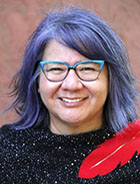
RoseAnne Archibald was elected the Assembly of First Nations National Chief in 2021. She was the first woman and youngest Chief elected for Taykwa Tagamou Nation in 1990, at 23 years old. She was also the first woman and youngest Deputy Grand Chief for Nishnawbe Aski Nation, as well as the first female and youngest Grand Chief for Mushkegowuk Council. She served a second term as Chief of Taykwa Tagamou Nation and a second term as Nishnawbe Aski Nation Deputy Grand Chief. For nine years, she ran a successful consulting business that provided advice and guidance to First Nations leaders and organizations, and specialized in negotiations and facilitation. She returned to elected leadership in 2018, becoming the first woman Ontario Regional Chief leading the Chiefs of Ontario. Chief Archibald has dedicated her adult life to serving and striving to create a better quality of life and future for First Nations people. She represents a generational change, bringing diplomacy and encouraging unity in the First Nations political system, while breaking down barriers since the start of her political career.
Métis National Council
Formed in 1983, the Métis National Council represents the Métis Nation nationally and internationally, with a central goal "to secure a healthy space for the Métis Nation’s ongoing existence within the Canadian federation." The Métis Nation is represented through four governing members: the Métis Nation of Ontario, the Métis Nation–Saskatchewan, the Métis Nation of Alberta, and the Métis Nation British Colombia. Together, they are the governing members of the Métis National Council, collectively representing the Métis Nation at the community, regional, provincial, national, and international levels.
The Métis National Council held elections on September 29, 2021, during their annual general assembly, to select a National President. In addition to the election, a resolution in favour of having the Métis Nation of Ontario added back at the assembly was passed. By virtue of this resolution the Métis Nation of Ontario’s probation status is held in abeyance until a committee presentation is provided on the seven communities added by Métis Nation of Ontario and their ongoing registry review process.
In September 2021, the Manitoba Metis Federation cabinet passed a resolution to not participate in the Métis National Council annual general assembly, this follows a resolution from their own annual assembly to withdraw from the Métis National Council assembly if Métis Nation of Ontario registry concerns of the Manitoba Metis Federation were not adequately responded to prior to the Métis Nation of Ontario rejoining Métis National Council. It is likely that the Department will be asked by the Manitoba Metis Federation to have a bilateral relationship with them directly.
It is expected that due to the withdrawal of Manitoba Metis Federation from the Métis National Council and with a new national leader, the Métis National Council will undergo some change. Once things stabilize, discussions on policy co-development, priority setting and funding agreements will need to be re-visited.
President: Cassidy Caron
Contact information: Redacted

Cassidy Caron was elected as President of the Métis National Council in September 2021, and is the first woman to hold the office. She has roots in the historic Métis communities of Batoche and St. Louis, Saskatchewan. She grew up closely connected to her Métis traditions, heritage and culture and is driven by her family and community values of respect, honesty and responsibility.
She served a four-year term as a provincially-elected representative of the Métis Nation British Columbia, serving as the Provincial Métis Youth Chair and its Minister Responsible for Youth. Through her role with Métis Nation British Columbia, she supported the coordination, design, resourcing, implementation and evaluation of innovative, culturally-grounded engagement and leadership development opportunities for Métis youth within all levels of Métis Nation British Columbia’s governance. President Caron goal is to explore and utilize innovative approaches to community development and Nation building, which promote effective collaboration and understanding between Indigenous Peoples and all Canadians.
Inuit Tapiriit Kanatami
Founded in 1971, Inuit Tapiriit Kanatami is the national voice of approximately 55,000 Inuit living primarily in 53 communities in four Inuit land claim regions (Inuvialuit Settlement Region–Northwest Territories, Nunavut, Nunavik–Northern Quebec, and Nunatsiavut–Northern Labrador). Inuit Tapiriit Kanatami represents and promotes the interests of Inuit on a wide variety of environmental, social, cultural, and political issues. Inuit Tapiriit Kanatami’s Board is made up of the Presidents of Inuit Tapiriit Kanatami and four Inuit land claim organizations (Nunavut Tunngavik Incorporated, Makivik Corporation, the Nunatsiavut Government, and the Inuvialuit Regional Corporation), as well as the President of Inuit Circumpolar Council (Canada). The presidents of the National Inuit Youth Council and Pauktuutit Inuit Woman of Canada are ex-officio members.
President: Natan Obed
Contact information: Redacted

On August 19, 2021, it was announced that Natan Obed had been elected by acclamation as President of Inuit Tapiriit Kanatami to a four-year term. This will be President Obed’s third term as President of the organization.
In the 1990s, President Obed left his home in Nain, Nunatsiavut, to get a bachelor’s degree in English and American studies at Tufts University in Boston, Massachusetts. After that, he went to work for the Labrador Inuit Association, helping negotiate an Inuit impacts and benefits agreement with respect to the Voisey’s Bay nickel mine. From there, he served nearly two years as Inuit Tapiriit Kanatami’s director of socio-economic development before moving to Iqaluit to become the director of social and cultural development for Nunavut Tunngavik Incorporated.
Congress of Aboriginal Peoples
The Congress of Aboriginal Peoples is a national representative organization for Métis, Non-Status and Status Indians and Southern Inuit of Labrador living off-reserve in Canada. It is a confederation of ten provincial affiliates. The Congress has five CIRNAC-funded affiliate Indigenous Representative Organizations in the east: Native Alliance of Québec, New Brunswick Aboriginal Peoples Council, Native Council of Prince Edward Island, Native Council of Nova Scotia, and the NunatuKavut Community Council (Labrador). The Congress is working to rebuild the remaining five provincial affiliates from Ontario-West.
Founded in 1971, as the Native Council of Canada, the organization was originally established to represent the interests of Métis and Non-Status Indians. Reorganized and renamed in 1993, the Congress of Aboriginal Peoples has extended its constituency to include off-reserve status and Non-Status Indians, Métis and Southern Inuit Aboriginal Peoples, and serves as the national voice for its provincial and territorial affiliate organizations. The Congress of Aboriginal Peoples also holds consultative status with the United Nations Economic and Social Council, which facilitates its participation on international issues of importance to Indigenous Peoples.
National Chief: Elmer St. Pierre
Contact information: Redacted

In 2006, Elmer St. Pierre was elected Vice Chief of the Ontario Coalition of Indigenous Peoples and in 2019, he was elected its Chief and President. He was elected Congress of Aboriginal Peoples National Chief on October 3, 2020. In the 1970s, he served as one of the founding members of the Métis Nation of Ontario, where he was a member until 2006. He was also a long-time member of the Ontario Métis Aboriginal Association and worked with them in a number of capacities until the organization discontinued operations around 2004.
Native Women’s Association of Canada
The Native Women’s Association of Canada is founded on the collective goal to enhance, promote, and foster the social, economic, cultural, and political well-being of First Nations and Métis women. The Native Women’s Association of Canada is an aggregate of 13 native women’s organizations from across Canada and was incorporated as a non-profit organization in 1974. The organization’s mission is to help empower women by being involved in developing and changing legislation that affects them, and by involving them in the development and delivery of programs promoting equal opportunity for Indigenous women and gender-diverse people.
The Department has had a long working relationship with the organization and has provided significant funding to support organizational capacity, the implementation of the Canada–Native Women’s Association of Canada Accord signed in February 2019, and other projects. In the past 18 months, the relationship has experienced some challenges and it is recommended that a further briefing be provided by officials prior to reaching out to President Whitman.
President: Lorraine Whitman
Contact information: 613-722-3033
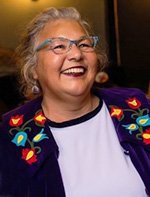
Lorraine Whitman is a member of Glooscap First Nation in Nova Scotia. She served Glooscap First Nation as an elected councillor from 1997–2012, and sat on the Board of Directors of the Confederacy of Mainland Mi’kmaq for more than 15 years. In 2017, Ms. Whitman was elected President of the Nova Scotia Native Women’s Association and became an Elder for Acadia University. She is also a recipient of the Nova Scotia Volunteer Award (2019). Most recently, she was elected President of the Native Women’s Association of Canada in September 2019.
Pauktuutit Inuit Women of Canada
Established in 1984, Pauktuutit Inuit Women of Canada is the national non-profit organization representing all Inuit women in Canada. Their mandate is to foster a greater awareness of the needs of Inuit women, and to encourage their participation in community, regional and national concerns in relation to social, cultural and economic development.
President: Rebecca Kudloo
Contact information: 613-238-3977
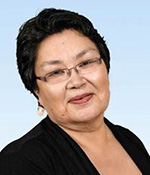
Rebecca Kudloo is the President of Pauktuutit Inuit Women of Canada. She was born on the land outside of Iglulik, Nunavut, and now lives in Baker Lake, Nunavut. President Kudloo fluently speaks Inuktitut and English and enjoys working with people of all ages. She was first elected as President in 2014 and previously served on the Pauktuutit Board as Vice-President and Regional Director for the Kivalliq region of Nunavut. As President, she represents Pauktuutit on the Board of Directors of Inuit Tapiriit Kanatami and Inuit Circumpolar Council (Canada).
Les Femmes Michif Otipemisiwak
Les Femmes Michif Otipemisiwak, also known as Women of the Métis Nation, is the recognized voice of Métis Nation women from across the Métis Motherland. Their vision is to enhance the social, cultural, economic, environmental and health and wellbeing of all Métis people with a focus on Métis women, youth, and 2SLGBTQQIA people. The organization was created by motion of the Métis National Council Board of Governors in 1999, and was incorporated in 2010, as an independent non-profit organization. Les Femmes Michif Otipemisiwak’s Board of Directors are members of the five Métis women organizations across the Métis Motherland.
President: Melanie Omeniho
Contact information: 780-919-6980

Melanie Omeniho is President of Les Femmes Michif Otipemisiwak. She is a descendent of the historical Métis community of Lac Ste. Anne and is a proud member of the Métis Nation of Alberta. As a young person, Melanie attended meetings and assemblies alongside her mother and other strong Métis women role models who insisted on being included and heard. Her political and advocacy career led her to play a role in the development and incorporation of Les Femmes Michif Otipemisiwak and to her fourth term as national President in October 2018, by Métis women across the Motherland.
First Nations Tax Commission
The First Nations Tax Commission is a shared-governance First Nations public institution that operates at arm’s length from the federal government. It supports the implementation of First Nations’ property taxation regimes under the First Nations Fiscal Management Act and under section 83 of the Indian Act. In addition to advocating for the advancement of First Nations’ fiscal jurisdiction and new areas of revenues, the First Nations Tax Commission is supporting the First Nations Infrastructure Institute Development Board in its efforts to develop a national institution providing First Nations with infrastructure planning, procuring, financing, and management capacity. The First Nations Fiscal Management Act sets out the First Nations Tax Commission’s purposes, functions, and powers.
Chief Commissioner: C.T. (Manny) Jules
Contact information: Redacted (phone), Redacted (email)
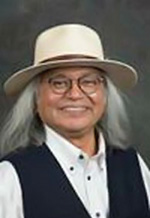
Chief Commissioner C.T. (Manny) Jules was the driving force behind the First Nations Fiscal Management Act (2005), which created the First Nations Tax Commission. He also led the amendment to the Indian Act (1988) which enabled First Nations to levy property taxes on designated lands. The Indian Taxation Advisory Board and the current First Nations property tax system were created as a result. Mr. Jules served as Chair of the Indian Taxation Advisory Board from 1989–2003, and 2005–2007. He served as Chief of the Kamloops Indian Band from 1984–2000. Mr. Jules has devoted more than 30 years of his life to public service in support of Aboriginal issues and received an Honorary Doctorate of Laws from the University of British Columbia in 1997, and another from Thompson Rivers University in 2006.
First Nations Financial Management Board
The Financial Management Board is a shared-governance public institution that operates at arm’s length from the federal government. The Financial Management Board assists First Nations in strengthening local financial management regimes, provides independent certification of First Nations’ financial performance and systems, and manages intervention mechanisms for the First Nations Fiscal Management Act regime. The Financial Management Board is also working collaboratively with ISC on the implementation of the ten-year grants initiative and has been piloting a new approach to strengthen the governance capacity of First Nations that are in default with the conditions in their funding agreements. The First Nations Fiscal Management Act sets out the Financial Management Board’s purposes, functions, and powers.
Executive Chair: Harold Calla
Contact information: 604-925-6665 ext. Redacted (phone), Redacted (email)

Harold Calla is a member of the Squamish Nation located in North Vancouver, British Columbia. After many years of experience in international business, he worked with the Squamish Nation as a negotiator in the areas of economic development, land management, and finance, and served eight years on the Squamish Council. He has also acted as an advisor and an arbitrator for First Nations in Western Canada.
He has completed terms on the Boards of the Canada Mortgage and Housing Corporation, Partnerships British Columbia Inc., and the Nicola Valley Institute of Technology, and has either chaired or served on audit committees of these boards. Harold is a recipient of numerous awards in recognition of excellence in leadership. In particular, the Certified General Accountants Association of Canada, when celebrating its 100th year in 2008, recognized him as one of 100 certified general accountants who, in its view, have influenced changes. In August 2012, Mr. Calla was also awarded a fellowship by the Certified General Accountants Association of Canada. Mr. Calla is a member of the Aboriginal Financial Officers Association and has been awarded the designation of Certified Aboriginal Financing Manager.
First Nations Finance Authority
The First Nations Finance Authority is a statutory not-for-profit organization without share capital, operating under the authority of the First Nations Fiscal Management Act. The First Nations Finance Authority’s purpose is to provide First Nations governments with investment options, capital planning advice, and perhaps most importantly, access to long-term loans at preferable interest rates. The First Nations Finance Authority is governed solely by the First Nations communities that join as borrowing members. The First Nations Finance Authority is also exploring innovative infrastructure financing approaches for First Nations to leverage government transfers for long-term loans. The First Nations Fiscal Management Act sets out the First Nations Finance Authority’s purposes, functions, and powers.
President and Chief Executive Officer: Ernie Daniels
Contact information: 250-768-5253 (phone), edaniels@fnfa.ca (email)

Ernie Daniels is a certified general accountant and a certified Aboriginal financial manager. Mr. Daniels moved from Ottawa, Ontario, to Kelowna, British Columbia, in fall 2011, to work with the First Nations Finance Authority as Director of Finance and was appointed as President and Chief Executive Officer in June 2012. Prior to joining the First Nations Finance Authority, Mr. Daniels was President and Chief Operating Officer of the Aboriginal Financial Officers Association of Canada for seven years and the Director of Assessment and Finance Operations at the Aboriginal Healing Foundation for five years. He has worked at a number of Aboriginal non-for-profit organizations in leadership and management positions. He was a member of the Canadian Institute of Chartered Accountants’ Research Study Group that looked at financial reporting by First Nations, and has served as Chair of the Northwest Territories Legislative Assembly Society, Chair of the Northwest Territories Development Corporation, and a former board member of the First Nations Financial Management Board.
8. Provincial and Territorial Ministers
British Columbia

Hon. Murray Rankin,
Minister of Indigenous Relations and Reconciliation
Contact Information: 250-953-4844
Email: IRR.Minister@gov.bc.ca
Alberta

Hon. Rick Wilson,
Minister of Indigenous Relations
Contact Information: 780-422-4144
Email: ir.ministeroffice@gov.ab.ca
Saskatchewan
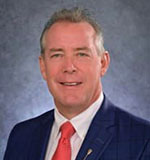
Hon. Don McMorris,
Minister Responsible for First Nations Parks, Métis and Northern Affairs
Contact Information: 306-787-6100
Email: minister.gr@gov.sk.ca
Manitoba
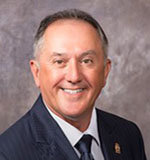
Hon. Alan Lagimodiere,
Minister of Indigenous and Northern Relations
Contact Information: 204-945-0565
Email: Alan.Lagimodiere@leg.gov.mb.ca
Ontario

Hon. Greg Rickford,
Minister of Indigenous Affairs
Contact Information: 416-327-4464
Email: greg.rickford@ontario.ca
Québec

Hon. Ian Lafrenière,
Minister Responsible for Indigenous Affairs
Contact Information: 418-528-8407
Email: maa@mce.gouv.qc.ca
New Brunswick

Hon. Arlene Dunn,
Minister Responsible for Aboriginal Affairs
Contact Information: 506-444-4835
Email: arlene.dunn@gnb.ca
Nova Scotia

Hon. Karla MacFarlane,
Minister of L'nu Affairs
Contact Information: 902-424-7409
Email: OAA@novascotia.ca
Prince Edward Island
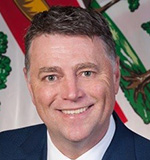
Hon. Dennis King,
Premier and Minister of Indigenous Relations
Contact Information: 902-368-4400
Email: premier@gov.pe.ca
Newfoundland

Hon. Lisa Dempster,
Minister for Indigenous Affairs and Reconciliation
Contact Information: 709-729-4776
Email: LisaDempster@gov.nl.ca
Yukon

Hon. Sandy Silver,
Premier
Contact Information: 867-393-7007
Email: sandy.silver@yukon.ca
Northwest Territories
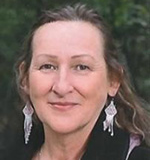
Hon. Caroline Cochrane,
Premier
Contact Information : 867-767-9140
Email: Caroline_cochrane@gov.nt.ca
Nunavut
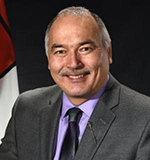
Hon. Joe Savikataaq
Premier and Minister of Aboriginal Relations
Contact Information: 867-975-5050
Email: jsavikataaq@gov.nu.ca
9. Annex A: Acts and Legislation
Comprehensive Land Claims Legislation
| British Columbia Treaty Commission Act | S.C., 1995, c. 45 |
|---|---|
| Cree-Naskapi (of Quebec) Act | S.C., 1984, c. 18 |
| Eeyou Marine Region Land Claims Agreement Act | S.C., 2011, c. 20 |
| Gwich'in Land Claim Settlement Act | S.C., 1992, c. 53 |
| James Bay and Northern Quebec Native Claims Settlement Act | S.C., 1976–77, c. 32 |
| Labrador Inuit Land Claims Agreement Act | S.C., 2005, c. 27 |
| Maanulth First Nations Final Agreement Act | S.C., 2009, c. 18 |
| Nisga'a Final Agreement Act | S.C., 2000, c. 7 |
| Nunavik Inuit Land Claims Agreement Act | S.C., 2008, c. 2 |
| Nunavut Land Claims Agreement Act | S.C., 1993, c. 29 |
| Sahtu Dene and Metis Land Claim Settlement Act | S.C., 1994, c. 27 |
| Tla'amin Final Agreement Act | S.C., 2014, c. 11 |
| Tlicho Land Claims and Self-Government Act | S.C., 2005, c. 1 |
| Tsawwassen First Nation Final Agreement Act | S.C., 2008, c. 32 |
| Western Arctic (Inuvialuit) Claims Settlement Act | S.C., 1984, c. 24 |
| Yale First Nation Final Agreement Act | S.C., 2013, c. 25 |
| Yukon First Nations Land Claims Settlement Act | S.C., 1994, c. 34 |
Self-government legislation
| Déline Final Self-Government Agreement Act | S.C., 2015, c. 24 |
|---|---|
| Kelowna Accord Implementation Act | S.C., 2008, c. 23 |
| Sechelt Indian Band Self-Government Act | S.C., 1986, c. 27 |
| Sioux Valley Dakota Nation Governance Act | S.C., 2014, c. 1 |
| Westbank First Nation Self-Government Act | S.C., 2004, c. 17 |
| Yukon First Nations Self-Government Act | S.C., 1994, c. 35 |
Specific Claims Legislation
| Manitoba Claim Settlements Implementation Act | S.C., 2000, c. 33 |
|---|---|
| Saskatchewan Treaty Land Entitlement Act | S.C., 1993, c. 11 |
| Specific Claims Tribunal Act | S.C., 2008, c. 22 |
Land Management, Fiscal Management and Taxation Legislation
| First Nations Fiscal Management Act | S.C., 2005, c. 9 |
|---|---|
| First Nations Land Management Act | S.C., 1999, c. 24 |
Northern Affairs Legislation
| Arctic Waters Pollution Prevention Act | R.S.C., 1985, c. A-12 |
|---|---|
| Canada Lands Surveys Act | R.S.C., 1985, c. L-6 |
| Canada Oil and Gas Operations Act | R.S.C., 1985, c. O-7 |
| Canada Petroleum Resources Act | R.S.C., 1985, c. 36 |
| Canadian High Arctic Research Station Act | S.C., 2014, c. 39, s. 145 |
| Dominion Water Power Act | R.S.C., 1985 c. W-4 |
| Mackenzie Valley Resource Management Act | S.C., 1998, c. 25 |
| Northern Canada Power Commission (Share Issuance and Sale Authorization) Act | S.C., 1988, c.12 |
| Northern Canada Power Commission Yukon Assets Disposal Authorization Act | S.C., 1987, c. 9 |
| Northwest Territories Act | S.C., 2014, c. 2, s. 2 |
| Northwest Territories Devolution Act | S.C., 2014, c. 2 |
| Nunavut Act | S.C., 1993, c. 28 |
| Nunavut Waters and Nunavut Surface Rights Tribunal Act | S.C., 2002, c. 10 |
| Nunavut Planning and Project Assessment Act | S.C., 2013, c. 14, s. 2 |
| Territorial Lands Act | R.S.C., 1985, T-7 |
| Yukon Act | S.C., 2002, c. 7 |
| Yukon Environmental and Socio-economic Assessment Act | S.C., 2003, c. 7 |
| Yukon Surface Rights Board Act | S.C., 1994, c. 43 |